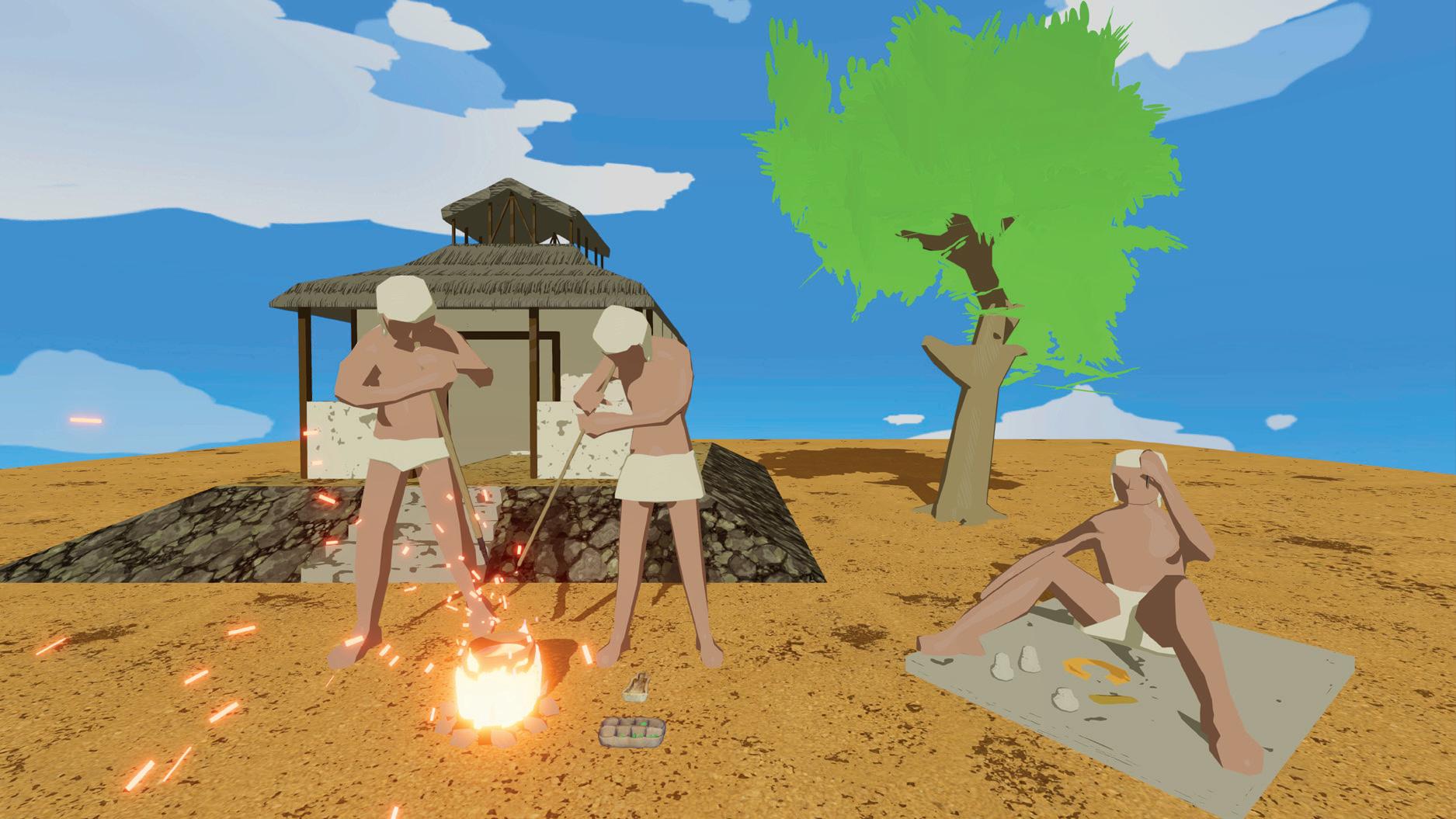
2 minute read
New technologies become tools for communication, education and disconcertion
Simulation and Visualisation
Creativity at The School of Simulation and Visualisation moves in tandem with the development of new technology and digital software, making each year unique from the last
Words: Michiel Turner and Zoe Young
This year’s School of Simulation and Visualisation cohort have developed a dynamic spectrum of work, exploring themes spanning spatiality to immersive investigation to ecology. Many of the students utilise contemporary techniques and digital software to realise their concepts. Max Wardle from the BSc Immersive Systems Design programme has created a virtual experience entitled Inside the Metallurgist’s Workshop, in collaboration with the Casa del Alabado Museum of PreColumbian Art in Quito, Ecuador. As the name suggests, Wardle’s work allows participants to interface with museum objects related to Ecuadorian indigenous heritage using a computer. The simulation features a rich colour palette with softened pixels, evoking a welcoming atmosphere for users to investigate. The Sound for the Moving Image programme has been significant in its fusion of digital artforms, inspiring students to merge their sonic practices with visual content. Much of the work showcased is driven by user experience, which is notable in Craig Hamilton’s Tributary, a game that invites audiences to trigger musical loops with a Nintendo games controller hooked up to both Ableton Live (a digital audio workstation software) and Max MSP (a music programming application). In the first version of Hamilton’s exhibit, players can arrange a lo-fi style piece of music featuring a rotation of jazz harmony and staggering beats. The second version includes a lush myriad of piano, synth, bass and percussion that can be assembled to create a dreamscape of sound. The aim is to make the music-making process a more accessible experience for those lacking knowledge of music theory or the resources to learn. Influenced by Mulholland Drive director David Lynch, Margarita Lioli’s Hypnagogia uses highly creative and detailed
Inside the Metallurgist's Workshop, Max Wardle, Immersive Systems Design
sound design to immerse the listener into a transient hypnotic state, offering a truly unique and evocative experience. A glimpse into the world of altered consciousness and dream sequences is established using hauntingly designed sonic elements through experimental recording. Through experimentation with different microphone techniques, including hydrophones (microphones that can record underwater) a highly unusual and unique soundscape has been crafted. A series of different frequencies were captured in order to reveal this otherworldly dimension, along with expert audio processing to transform the sounds. The arrangement begins with an eerie pulse, reminiscent of mechanical horror sounds, which induce uncomfortable sensations and prepare us for a journey into another realm. Composed using wavetable synthesis, a peacefully synthetic and atmospheric passage encapsulates us further into this authentic representation of a different reality. The sweeping, carefully panned industrial sounds gradually induce an unusual, yet somewhat pleasant state. It ends on a pitch-affected, saturated and cleverly edited version of Minnie Ripperton’s Lovin’ You, turning this once simple love song into a hauntingly captivating sound interpretation, fitting rather uncannily into the soundscape. If you are interested in exploring different states of human consciousness, this soundscape offers a lucid alternative which successfully leaves you feeling as though you’ve just been on a weird and wonderful journey. A must hear!
The School of Simulation and Visualisation Degree Show runs 1-12 Jun in the Haldane Building, 24 Hill Street, Glasgow. It is also available to view online at gsashowcase.net






